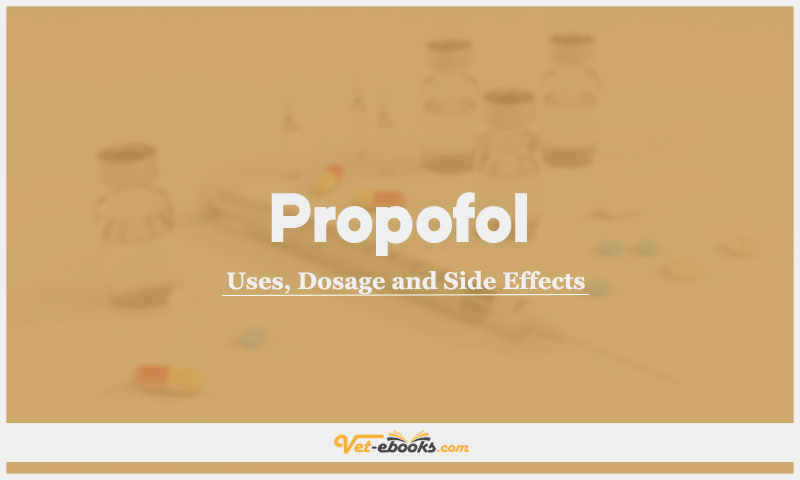Propofol In Dogs & Cats: Uses, Dosage and Side Effects

Overview
- The mechanism of action is not fully understood but it is thought to involve modulation of the inhibitory activity of GABA at GABAA receptors
Uses of Propofol
- Induction of anaesthesia and maintenance of anaesthesia using intermittent boluses or a continuous rate infusion.
Dose of Propofol in Dogs and Cats
Dogs:
- Unpremedicated: 6–7 mg/kg i.v.; premedicated 1–4 mg/kg i.v. Continuous rate infusion for sedation or maintenance of anaesthesia: 0.1–0.4 mg/kg/min.
- Lower doses are required when propofol is combined with other drugs for the maintenance of anaesthesia.
Cats:
- Unpremedicated: 8 mg/kg i.v.; premedicated 2–5 mg/kg i.v. Continuous rate infusion for maintenance of anaesthesia is likely to result in a prolonged recovery in cats, doses of 0.1–0.4 mg/kg/min are appropriate depending on other agents given in combination.
Drug Dosage Calculator
You Should Give:
Side Effects of Propofol in Dogs and Cats
- Rapid injection of large doses of propofol can lead to adverse effects such as apnea, cyanosis, bradycardia, and severe hypotension.
- These problems are less likely to occur when the injection is administered over a 30 to 60-second period.
- In dogs, immediate intravenous administration of propofol may result in muscle rigidity, paradoxical muscle movements, and tremors. These muscle movements do not respond to diazepam treatment, and additional doses of propofol can exacerbate the issue. However, the tremors and movements tend to subside over time without specific treatment.
- Some studies have suggested a potential association between repeated daily administration of the lipid preparation of propofol (for 5 days) and Heinz body anemia in cats. However, recent research findings have been conflicting on this matter.
- Propofol itself is not irritating to tissues, but patients may exhibit a pain reaction during intravenous injection. The exact mechanism causing this pain is still unknown.
Contraindications of Propofol in Dogs and Cats
- No information is available.
Some Notes:
- The use of a solution containing the benzyl alcohol preservative for continuous rate infusion is not recommended for maintaining anaesthesia due to the potential risk of toxicity from prolonged administration.
- Intravenous injection of propofol leads to a rapid loss of consciousness as the highly lipophilic drug is taken up by the central nervous system (CNS).
- Propofol then quickly distributes to peripheral tissues, causing a decrease in CNS concentration. Without further doses, the patient will awaken.
- In dogs, propofol is swiftly metabolized in the liver and potentially in other extrahepatic sites, although the clinical significance of extrahepatic metabolism in animals is uncertain and may vary by species. In contrast, cats experience a less rapid recovery due to the phenolic nature of the compound.
- Propofol lacks analgesic properties, making it preferable for use in combination with other drugs to maintain anaesthesia. For instance, a continuous rate infusion of a potent opioid can be employed.
- Special attention is required when administering propofol to hypovolemic animals and those with compromised cardiopulmonary, hepatic, or renal function.
Tip
Do You Want To Increase Your Veterinary Knowledge and Practical Skills?
You Can Now Browse and Download +3000 Books For Veterinary Professionals & Students Online.
Download Veterinary Books




















